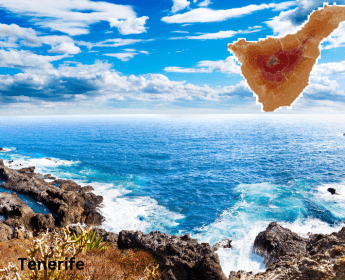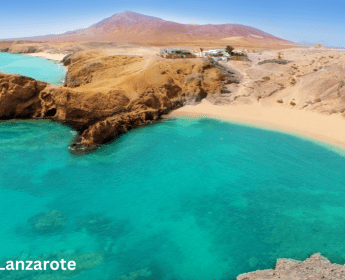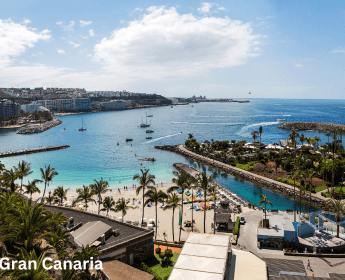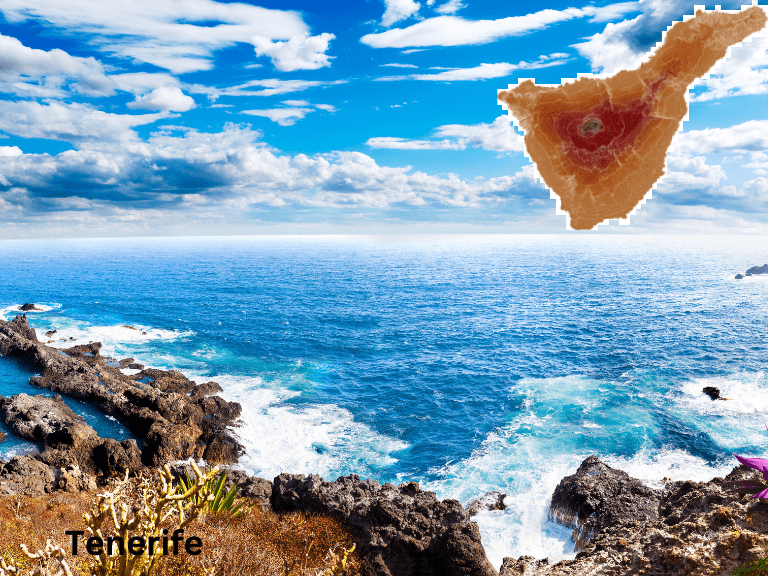The Canary Islands are known for their beautiful beaches and warm climate, but there is so much
 The Canary Islands are known for their beautiful beaches and warm climate, but there is so much more to these Spanish islands than just sun, sand, and sea. In this article, we’ll take you on a journey to discover the hidden heart of the Canary Islands, exploring the islands’ rich history, culture, and natural beauty.
The Canary Islands are known for their beautiful beaches and warm climate, but there is so much more to these Spanish islands than just sun, sand, and sea. In this article, we’ll take you on a journey to discover the hidden heart of the Canary Islands, exploring the islands’ rich history, culture, and natural beauty.
The History of the Canary Islands
The Canary Islands have a fascinating history that spans back thousands of years. The islands were originally inhabited by the Guanches, an indigenous people who lived in harmony with the natural environment. Over time, the Spanish colonised the islands, and their culture and traditions were suppressed.
Today, the Canary Islands are a unique blend of Spanish and Guanche cultures, and it is possible to see remnants of the Guanche culture in the islands’ architecture, art, and language.
Exploring the Culture of the Canary Islands
The Canary Islands have a rich and diverse culture that is influenced by their unique history and geography. The islands are home to a vibrant arts and music scene, and visitors can experience traditional Canarian music and dance at local festivals and events.
One of the most interesting aspects of Canarian culture is the food. The islands are famous for their fresh seafood, and visitors can try traditional dishes like gofio, a type of flour made from roasted grains that is used in many Canarian dishes.
The Natural Beauty of the Canary Islands
While the Canary Islands are known for their beautiful beaches, their natural beauty extends far beyond the coastline. The islands are home to diverse landscapes, including volcanic mountains, lush forests, and desert landscapes.

Tenerife is the largest and most populous island in the Canary Islands archipelago, located off the coast of West Africa and belonging to Spain. It is known for its stunning beaches, diverse landscapes, and vibrant culture. The island is dominated by the massive Mount Teide, a volcano that is the highest point in Spain, standing at 3,718 meters (12,198 feet) above sea level. The volcanic landscape of the island is one of its most striking features, with black sand beaches, dramatic cliffs, and otherworldly rock formations.
Tenerife is a popular destination for tourists, who are drawn to its year-round warm climate, beautiful beaches, and wealth of outdoor activities. The island has a long coastline with a variety of beaches, ranging from secluded coves to long stretches of golden sand. Some of the most popular beaches include Playa de las Américas, Los Cristianos, and Costa Adeje.
In addition to its beaches, Tenerife is also known for its unique flora and fauna. The island has several nature reserves and parks, including the Teide National Park, which is a UNESCO World Heritage site and home to a variety of rare and endemic species.
The island is also steeped in history and culture, with a rich heritage that reflects its diverse influences. Visitors can explore the historic old town of La Laguna, which features colonial architecture and narrow streets lined with colorful houses. The island also hosts several festivals throughout the year, including the Carnival of Santa Cruz de Tenerife, which is one of the largest and most colorful carnivals in the world.
Overall, Tenerife offers a unique blend of natural beauty, outdoor activities, and cultural experiences that make it a popular destination for visitors from around the world.

Lanzarote is a captivating and rugged island, situated in the Canary Islands archipelago off the coast of West Africa. It is known for its stark, lunar-like landscape, volcanic formations, and unique blend of traditional Spanish and indigenous Canarian cultures.
The island’s dramatic geography was shaped by volcanic activity, with the last eruption taking place in the 18th century. As a result, Lanzarote is home to some of the most unique and surreal landscapes in the world, featuring stark black rock formations, sweeping lava fields, and rugged mountain ranges. The island’s famous Timanfaya National Park is a must-see, with its eerie terrain and bubbling geothermal activity.
Despite its rugged exterior, Lanzarote is also home to some of the most stunning beaches in the Canary Islands. The golden sands of Papagayo beach are a particular highlight, with crystal-clear waters perfect for swimming, snorkeling, and sunbathing.
Lanzarote’s unique culture is shaped by its long history of Spanish and Canarian influences. The island’s traditional architecture features white-washed buildings, wooden balconies, and colorful shutters. Visitors can immerse themselves in the island’s rich cultural heritage by exploring the historic capital of Arrecife, with its winding streets and lively markets.
Lanzarote is also renowned for its wine, with a long history of viticulture dating back to the 17th century. The island’s unique volcanic soil and climate create the ideal conditions for growing wine grapes, and visitors can sample the local Malvasia wine at one of the many vineyards scattered throughout the island. Overall, Lanzarote is a captivating and unforgettable destination, offering a unique blend of natural beauty, rich culture, and outdoor adventure. Whether you’re seeking relaxation or adventure, Lanzarote is a must-visit destination for any traveler looking to experience the best that the Canary Islands have to offer.

Gran Canaria is one of the seven main islands that make up the Canary Islands archipelago, located off the coast of West Africa and belonging to Spain. It is the third-largest island in the Canaries, after Tenerife and Fuerteventura, and is known for its stunning beaches, rugged landscapes, and year-round warm climate.The island is home to a diverse range of landscapes, from the lush forests of the north to the barren deserts of the south. The interior of the island is dominated by a mountain range, with the highest peak being Pico de las Nieves at 1,949 meters (6,394 feet).
Gran Canaria is a popular destination for tourists, who are attracted by its beautiful beaches, clear blue waters, and abundance of outdoor activities. The island has a long coastline with a variety of beaches, ranging from secluded coves to long stretches of golden sand. Some of the most popular beaches include Playa del Inglés, Maspalomas, and Puerto Rico.In addition to its beaches, Gran Canaria is also known for its unique flora and fauna. The island has several nature reserves and parks, including the Tamadaba Natural Park, which is home to a variety of plant and animal species, some of which are found nowhere else on earth.
The island is also steeped in history and culture, with a rich heritage that reflects its diverse influences. Visitors can explore the historic old town of Las Palmas, which features colonial architecture and narrow streets lined with colorful houses. The island also hosts several festivals throughout the year, including the Carnival of Las Palmas and the Fiesta de San Juan. Overall, Gran Canaria offers a unique blend of natural beauty, outdoor activities, and cultural experiences that make it a popular destination for visitors from around the world.
The Canary Islands are a hidden gem that is waiting to be discovered. By exploring the islands’ rich history, culture, and natural beauty, visitors can experience a side of the islands that is often overlooked. Whether you are interested in history, or culture, or want to soak up the sun on a beautiful beach, the Canary Islands have something to offer everyone. Top of Form
